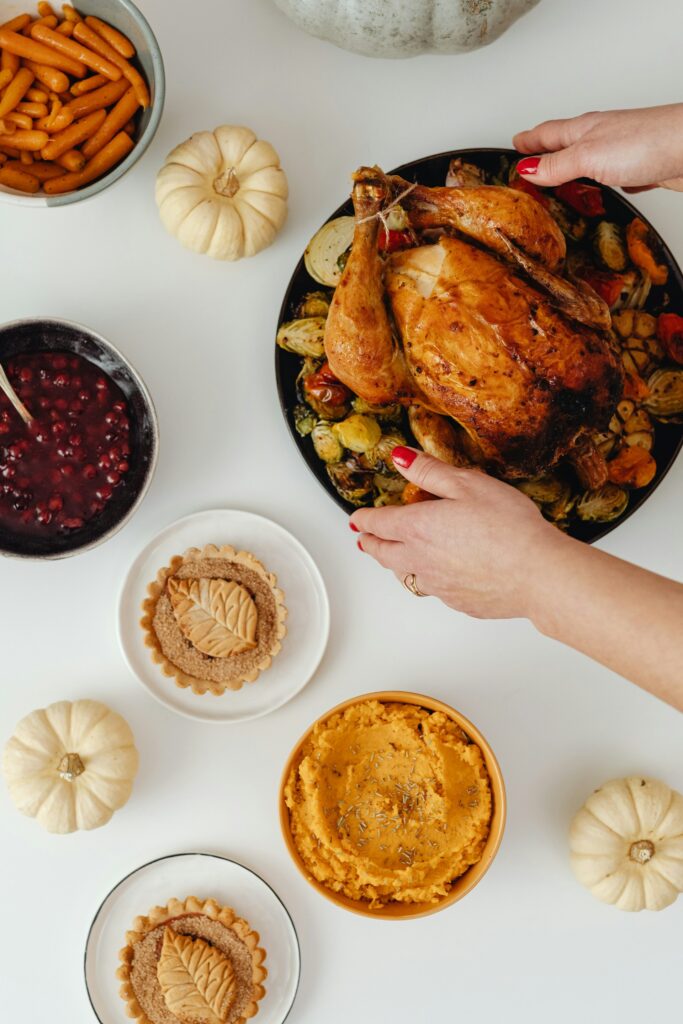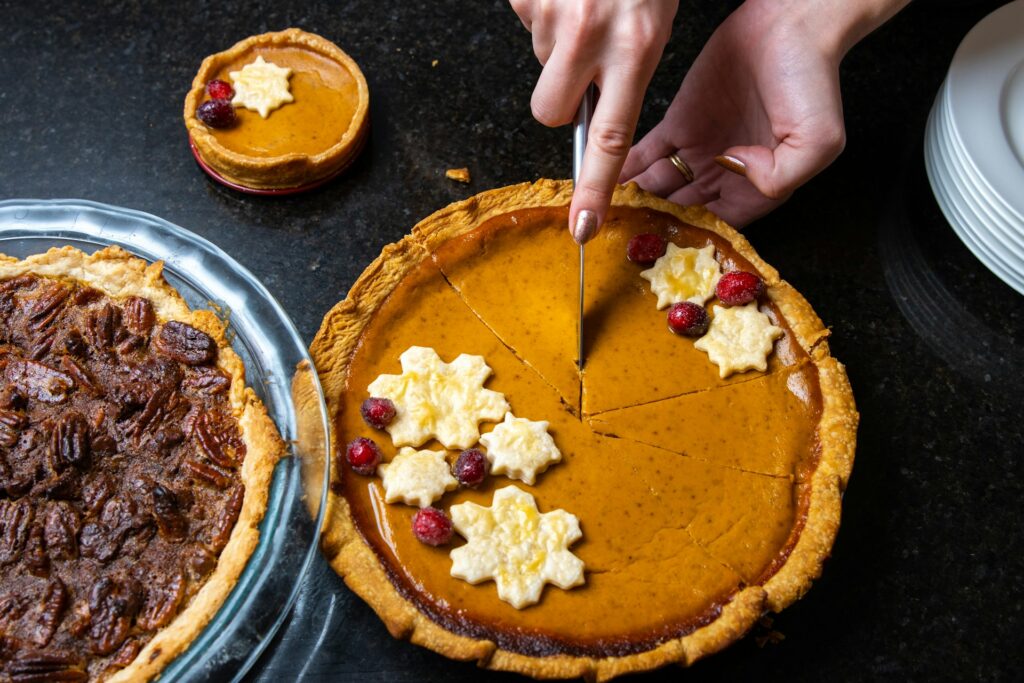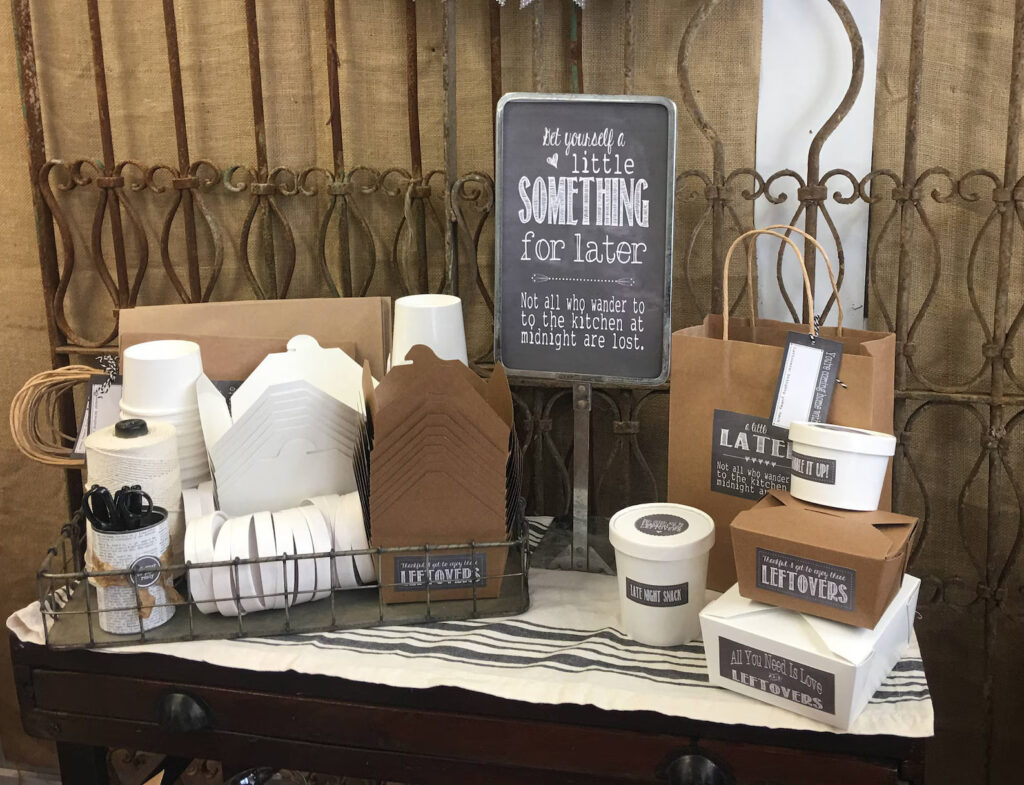Thanksgiving is a time for gathering with loved ones and sharing delicious food, but hosting can sometimes feel overwhelming.
To make your Thanksgiving dinner a success, focus on planning ahead, managing your time wisely, and creating a warm atmosphere for your guests. With a few practical tips, you can host a memorable feast without the stress.
Start by preparing a checklist of everything you’ll need, from the dishes you’ll make to what you’ll need to set the table to decorations.
Consider setting up activities for kids as well to keep them busy and planning games that everyone can enjoy.
Planning Your Thanksgiving
Start by focusing on your guest list, menu selection, shopping strategies, and timeline to ensure a smooth experience on the big day. Here’s how to get started.
Building a Guest List
Creating a guest list is your first step in planning. Consider family, friends, and any special guests. Reach out early to confirm availability.
Take note of any dietary restrictions to accommodate everyone’s needs.
You might want to set a limit on the number of guests to keep things manageable. A smaller gathering can feel more intimate and easier to host.
Menu Considerations
When planning your menu, think about traditional dishes and personal favorites. Include classics like turkey, stuffing, and cranberry sauce, along with any unique recipes that reflect your style.
Make sure to factor in different dietary restrictions among your guests. Offering vegetarian or gluten-free options can make everyone feel included.
Plan for sides that complement your main dish and can be prepared ahead. This minimizes stress on the actual day as you juggle multiple tasks.
You can also ask guests to bring something to take it off your hands.

Shopping and Budget Tips
Budgeting is crucial for a successful Thanksgiving. Determine how much you want to spend and allocate funds for food, decorations, and supplies.
Create a detailed grocery list outlining each ingredient for your planned menu. Stick to this list to avoid overspending.
Consider shopping sales ahead of time to take advantage of lower prices.
Creating a Timeline and Schedule
Start by deciding when dinner will be served, then work backward to schedule tasks.
Assign cooking times for each dish, remembering that some items can be prepared the day before. For instance, bake pies or prepare casseroles a day in advance.
As the day approaches, map out the order of tasks. This ensures everything flows smoothly, from cooking to setting the table.
Preparation Checklist
A thorough checklist can be a lifesaver as you prepare. Begin by listing all the dishes you plan to make, along with their cooking times.
Include lists for groceries, utensils, and serving dishes. Don’t forget to check if you have enough chairs and table space for everyone.
On the day of, refer to your checklist regularly. It keeps you organized and helps ensure that nothing is overlooked when entertaining guests.

Thanksgiving Recipes and Cooking
Selecting Standout Recipes
Begin by curating recipes that resonate with your guests’ preferences. Consider traditional staples like mashed potatoes, cranberry sauce, and stuffing.
You might also want to introduce a twist on classics, such as using maple syrup in your sweet potatoes or adding nuts to bread rolls.
A mix of family recipes and trendy dishes will impress everyone at the table. Organize your meal with a combination of roasted, baked, and sautéed items for diversity.
The Turkey: Prep to Perfection
The turkey is often the centerpiece of Thanksgiving dinner. Start by selecting the right size turkey, aiming for about 1.5 pounds per person.
Thaw your turkey in the refrigerator several days before cooking.
Brining your turkey enhances flavor and moisture. Season well with herbs like thyme, rosemary, and sage, and roast it in a well-preheated oven.
Use a meat thermometer to ensure perfect doneness, aiming for an internal temperature of 165°F in the thickest part of the breast.

Showstopping Side Dishes
Side dishes include both traditional and modern options. Classic choices like creamy mashed potatoes and green bean casserole can be complemented by roasted Brussels sprouts or a bright salad.
Consider adding a sweet potato dish, whether it’s a casserole topped with nuts or simply roasted with olive oil and spices.
Don’t forget about flavorful stuffing, which can be cooked inside the turkey or separately.
Dessert Delights
Desserts are a sweet finale to your Thanksgiving feast. Pumpkin pie reigns supreme, but consider adding pecan pie or apple crisp for variety.
Ensure your ingredients are fresh, and use a mix of spices like cinnamon and nutmeg to enhance the flavors.
If you’re short on time, consider no-bake desserts or simple fruit tarts that can be prepared in advance. A touch of whipped cream or a scoop of vanilla ice cream can make any dessert even more enticing.
Beverages and Bar Setup
Complement your meal with a well-thought-out beverage selection. Offer a mix of alcoholic and non-alcoholic options to cater to all guests.
Craft cocktails, such as apple cider mimosas or spiced pumpkin pie punch, can add elegance.
Don’t forget the basics like wine, beer, and soft drinks. A simple bar setup with glassware, ice, and garnishes will make things easier.
Provide a few snacks or appetizers for guests to enjoy while dinner is being prepared.
The Art of Hosting
Focus on creating a welcoming environment while ensuring that every guest feels included and comfortable.
Setting the Table
Setting the table is your first step in creating an inviting ambiance. You can start with a beautiful tablecloth or runner that complements your décor. Pair it with suitable tableware—dinner plates, side plates, and bowls that match your theme.
Don’t forget about utensils and glassware. Arrange each place setting with a knife, fork, and spoon on either side of the plate. Consider adding personalized place cards for a special touch.

Hosting Overnight Guests
If you have overnight guests, preparation is essential. Ensure that you have extra bedding, pillows, and towels ready in designated rooms. Consider setting up a small welcome basket filled with snacks and drinks to make them feel at home.
Open Your House Up Early
Opening your home early allows guests to mingle and settle in before the main event. Set up a cozy area with comfortable seating where everyone can relax. Light snacks and drinks can serve as an icebreaker while people arrive.
Consider playing soft background music to create a welcoming atmosphere.
Entertaining and Activities
Thanksgiving games or crafts can entertain guests of all ages. A family trivia game related to Thanksgiving history can engage everyone and spark laughter.

Catering to Kids
When hosting families with children, consider their needs as well. Design a special area for kids where they can play or color quietly. This will allow parents to enjoy the dinner without distraction.
Effective Kitchen Management
Managing the kitchen efficiently during Thanksgiving requires careful planning and organization. By focusing on organization, utilizing the right tools, and ensuring safety, you can create a seamless cooking experience.
Organization and Cleaning
Start by decluttering your kitchen. Clear countertops, ensuring you have space for prep and cooking. Keep a clean kitchen by designating a trash can nearby to dispose of waste as you go.
Organize your utensils and tools for easy access. Arrange pots, pans, and mixing bowls in a way that keeps frequently used items at the forefront. This setup saves time when you’re juggling multiple dishes.
Utilize your refrigerator smartly. Store prepped ingredients in labeled containers, making it easier to find what you need quickly.
Efficient Use of Tools and Appliances
Make sure your kitchen tools are at the ready. Set out essentials like your mixer, roasting pan, and meat thermometer before you begin cooking. This preparation minimizes time wasted searching for equipment.
Consider using appliances strategically. A slow cooker can keep dishes warm without taking up oven space. If you have a microwave, use it for reheating or quick cooking tasks, allowing multitasking during meal prep.
To maximize efficiency, create a checklist of kitchen tasks. This ensures you don’t overlook important steps, from mixing ingredients to checking temperatures.
Let People Help
Cooking for Thanksgiving can be a team effort. Involve family members or friends in simple tasks, like setting the table or chopping vegetables. This not only lightens your load but makes the day more enjoyable.
Assign specific duties to helpers. Whether it’s stirring gravy or handling appetizers, clear instructions will ensure everyone knows their role. This coordination helps you manage the kitchen without feeling overwhelmed.
Remember to use your dishwasher to keep dishes clean as you cook. Having help with the cleanup allows you to focus more on food preparation and less on post-meal mess.

Safety and Food Handling
Prioritize safety in your kitchen. Always wash your hands before handling food, especially after touching raw meat. Utilize separate cutting boards for vegetables and proteins to avoid cross-contamination.
Keep your kitchen well-ventilated while cooking to prevent any smoke or steam buildup. Be mindful of hot surfaces and sharp utensils, ensuring guests are out of the way as you work.
Use your fridge wisely. Store leftovers in airtight containers promptly after the meal. This minimizes bacteria growth and ensures food safety.
Managing Cooking Times and Temperatures
Plan your cooking times delicately. Create a timeline that outlines when each dish should go into the oven or stovetop. This prevents overlap and ensures everything is ready to serve simultaneously.
Use your oven effectively by utilizing all available racks. Position dishes so they cook evenly and take advantage of your oven’s capacity.
Post-Thanksgiving Strategies
After the excitement of Thanksgiving, it’s important to manage leftovers, tackle cleanup efficiently, and take a moment to reflect on the holiday. These strategies will help you enjoy your time with family and friends while minimizing stress.
Handling Leftovers
Leftovers are one of the best parts of Thanksgiving, and there are many ways to utilize them. First, ensure that all food is cooled before storing to prevent spoilage.
Consider making meal kits by combining various leftovers into convenient portions. For instance, mix turkey, stuffing, and gravy in one container for easy reheating. Creative ideas like turkey sandwiches or casseroles can make mealtime flavorful and fun.
You can freeze leftovers for later enjoyment, too. Foods like cranberry sauce and mashed potatoes freeze well, extending your Thanksgiving feast.
You can also set up a leftover station where guests can help themselves and bring some home.

Cleanup and Storage
Cleaning up after Thanksgiving can feel overwhelming, but a plan can help. Start by clearing the table and moving dishes to the kitchen. Involve family members to make it quicker and more enjoyable.
Utilize decimal cleaning: tackle one area at a time to avoid frustration. Soak pots and pans immediately if they have stubborn food. Organizing your storage space beforehand makes finding containers for leftovers easier.
For larger items like turkey, carve it and portion it into different containers. This promotes faster cooling and storage.
Reflecting and Giving Thanks
Thanksgiving is about gratitude, so take a moment to reflect on the day. Engage with family and friends by sharing what you appreciated the most. Whether it was a delicious dish or quality time together, acknowledging these moments enhances the experience.
Consider writing down your thoughts in a gratitude journal for future reflection. This can be a meaningful tradition to revisit every year.
Additionally, don’t forget to extend thanks to those who helped make the day special. A simple message or a small gesture can strengthen connections and deepen relationships through gratitude.
Save it on Pinterest for later:


